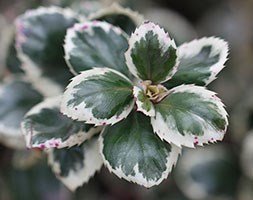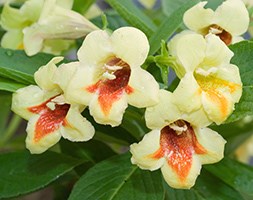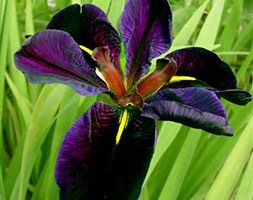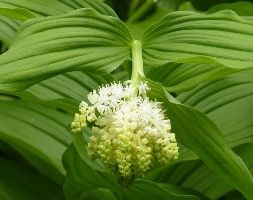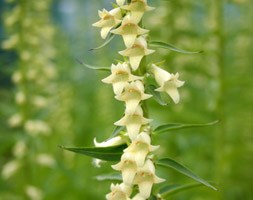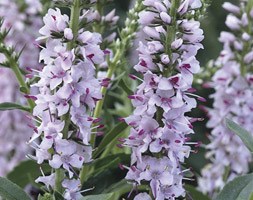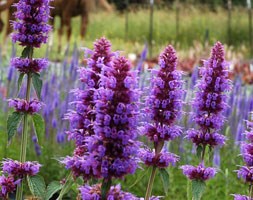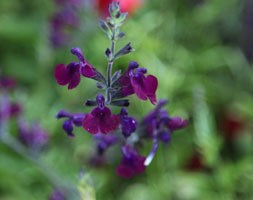New products at Crocus
by Sarah - April 14th, 2014.Filed under: Crocus, New Products.
New lines at Crocus
Ilex x meserveae ‘Casanova’ (blue holly) £19.99
Position: full sun or partial shade Soil: moist, well-drained, moderately fertile, humus-rich soil Rate of growth: fast-growing Flowering period: May Hardiness: fully hardy This decorative new holly is incredibly cold-hardy so is perfect if you want something showy for an exposed position. It has glossy dark green leaves, each with an irregular creamy yellow to white variegation and a softly serrated edge. The new stems are attractive too, as they initially have a burgundy flush. It is a male form, so will not produce berries, however it does produce tiny pinkish white flowers and it will be an effective pollination partner for nearby female hollies. A tough, low maintenance evergreen, it will need virtually no care once establsihed. Garden care: Plants grown as free-standing specimens require minimal pruning – remove diseased or misplaced branches in spring. Trim plants grown as formal hedges in late summer. After pruning apply a generous 5-7cm mulch of well-rotted compost or manure around the base of the plant.
Weigela middendorffiana ‘Mango’ (weigela / weigelia) £14.99
Position: full sun or partial shade Soil: fertile, well-drained soil Rate of growth: average Flowering period: May and June Hardiness: fully hardy This is a striking and reliable new form, that has only just been released onto the market. With the energence of the foliage in spring, it forms an upright mound of lush leafy stems, which in late spring to early summer are topped with open clusters of creamy-yellow bell-shaped flowers, each with a distinctively mottled orange-pink throat. Garden care: Once established prune each year in midsummer after flowering, removing one or two of the older stems to the base and cutting back the flowered stems to strong shoots below the spent flowers.
Knautia macedonica ‘Mars Midget’ (knautia) £8.99
Position: full sun Soil: moderately-fertile, well-drained, preferably alkaline soil Rate of growth: average Flowering period: July to September Hardiness: fully hardy Deep crimson, pincushion-like flowers appear on slender stems from July to Septe mber. This is a dwarf variety of the popular perennial that is more compact, bu t still has good-sized flowers that grow up to 5cm (2in) across and will bring long-lasting colour to a mixed or herbaceous border. It’s best planted in well -drained, soil in full sun and supported with twiggy pea sticks. Although it pr efers alkaline soil, it will thrive in neutral soil, too. It is a magnet for be ees and butterflies. Garden care: Support with twiggy pea sticks or brushwood well before the flowers appear. Cut down to the ground in autumn. This plant is susceptible to powdery mildew. To help prevent this, mulch well with rotted manure or compost in autumn and keep it well watered.
Iris ‘Black Gamecock’ (water iris) £7.99
Position: full sun or partial shade Soil: moist to wet or boggy, humus-rich, acidic soil Depth of water: 0-15cm (0-6in) Rate of growth: average to fast-growing Flowering period: May to July and occasionally in September Hardiness: fully hardy Sublime when planted in drifts at the edges of a pond, this elegant iris has larger than average (up to 10cm across) flowers, in a deep shade of purple. They need reliably moist soil, so they also make an excellent choice for bog gardens. Their flowers are mainly produced in late spring and early summer although they may have a second, smaller flush in autumn. Garden care: Divide large clumps immediately after flowering.
Maianthemum racemosum ( ( syn. Smilacena racemosa )) £6.99
Position: partial to full shade Soil: humus-rich, moist but well-drained neutral to acidic soil Rate of growth: average Flowering period: April and May Hardiness: fully hardy Providing excellent groundcover for the woodland floor, this rhizomatous perennial has arching leafy stems, which in late spring and early summer, are topped with large heads of fluffy-looking flowers. It will flourish in soils that are reliably moist. Garden care: Provide protection from cold winds.
Digitalis lutea (foxglove) £5.99
Position: partial shade Soil: moist but well-drained, preferably alkaline soil Rate of growth: fast growing Flowering period: June to July Hardiness: fully hardy Slightly glossy rich green leaves form a basal clump, from which stout stems arise in early summer bearing small soft yellow trumpets that are attractive to pollinating insects. More reliably perennial than many other foxgloves, it makes a welcome addition to the woodland floor, where it will settle in nicely with ferns and other shade-lovers. Garden care: Ensure that the soil is kept moist in summer. After flowering cut back the flowered spikes to encourage more sideshoots. Cut down to the ground after flowering. Apply a generous 5-7cm (2-3in) mulch of well-ro tted organic matter around the plant in early spring.
Veronica ‘Pink Harmony’ (speedwell) £5.99
Position: full sun or partial shade Soil: moderately fertile, moist, well-drained soil Rate of growth: average Flowering period: June and July Hardiness: fully hardy Noted for its abundance of blush-pink summer flowers, each with protruding deep pink stamens, this compact speedwell will mix well with pastel blues and purples as well as stronger shades of pink. Ideal in a cottage garden setting. Garden care: Remove faded flower stems in autumn. Apply a generous 5-7cm mulch of well-rotted garden compost or manure around the base of the plant in spring.
Agastache ‘Blue Boa’ (Mexican giant hyssop) £5.99
Position: full sun Soil: well-drained, fertile soil Rate of growth: average Flowering period: July to October Hardiness: hardy (borderline) This new form is dependably hardy to -5C and produces its fattened spikes of deep violet-blue flowers, which help attract beneficial insects, from early summer to mid-autumn. The rich green foliage has a licorice-like aroma when gently bruised. Garden care: Don’t cut back the faded flower-stems in until early spring, as they provide interest in the winter months. Lift and divide congested colonies in spring.
Salvia x jamensis ‘Nachtvlinder’ (salvia) £5.99
Position: full sun Soil: moderatley fertile, moist but well-drained soil Rate of growth: average Flowering period: June to August Hardiness: frost hardy (may need winter protection) Velvet-like plum-purple petals form hooded flowers over a long period in summer and autumn. Fully hardy in freely draining soils, this bushy shrub will become drought tolerant once established. Garden care: To prolong flowering remove the flower spikes as soon they start to fade. Apply a generous 5-7cm (2-3in) mulch of well-rotted garden compost or manure around the base of the plant in spring. Protect from excessive cold and waterlogged soils.







